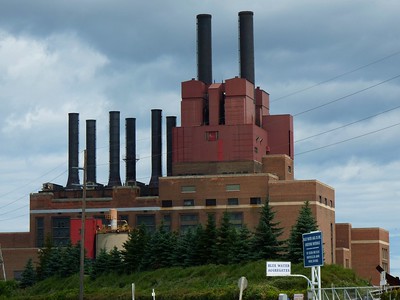Michigan’s manufacturing industries have often been unkind to the environment. Our pleasant peninsulas may collectively be known as the Great Lakes State, but we’re not in the running for “Great Air State.” Currently, Michigan ranks 37th among all states for air quality. It also ranks 10th for CO2 emissions. One reason is our continued use of fossil fuels to generate electricity and our limited development of clean energy.
According to DTE, the company currently generates about 54% of its electricity using coal. About 18% of its output comes from its nuclear power plants, and about 14% comes from natural gas-fired power plants. Another 13% comes from renewable fuel sources, and about 11.5% comes from wind generation. The remainder comes from an array of both “clean” and “dirty” sources.
Bills currently in the state legislature would require utility companies to eliminate the use of coal to generate electricity by 2030, and the use of all fossil fuels by 2035. All electricity generation in Michigan would need to come from carbon-free sources after that time. If these bills pass, they will trigger a massive shift in direction for Michigan’s energy production landscape.
Energy production is like milk production; everything gets made locally. Michigan does not have the option to “import” clean electricity because electricity generation and transmission simply don’t work that way. If the Michigan legislature puts the transition to clean energy on this aggressive timetable, we will need thousands of workers trained in clean energy technologies in the next decade.
Current solar technology probably won’t produce enough energy to be a significant source of clean power. However, companies will continue to provide small-scale solar arrays to power individual homes and businesses. These arrays can reduce demand for commercially generated electricity but will not eliminate permanent connections to a power distribution network.
Bills would shift Michigan’s clean energy profile
Michigan certainly has more than enough water laying around, but hydroelectric power isn’t likely to be a major contributor to Michigan’s updated energy profile. Hydroelectric power is technically clean, but it has a significant impact on waterways, marine life, and land, so it is not considered a viable source of electricity generation.
Wind power is more likely to be a reliable source of clean energy. Power companies can build wind farms on both land and in the water. Water-based wind farms could eliminate the need to acquire or lease large, open spaces to house wind turbines.
Now is the time for community colleges to develop alternative energy technician training programs. Because of Michigan’s northern latitude, the most practical clean energy applications are likely to involve wind, nuclear power, and small-scale solar.
The clean energy mandates are on their way. The timetable may become less aggressive, but the move to clean energy generation won’t be going away. This is an opportunity for community colleges to be part of the solution to Michigan’s clean energy needs.
Photo Credit: Ken, via Flickr
















